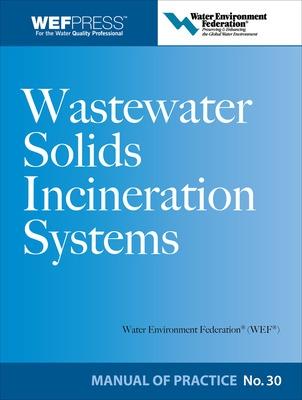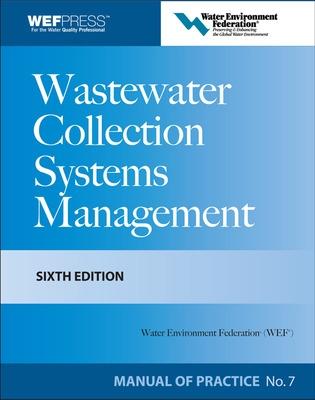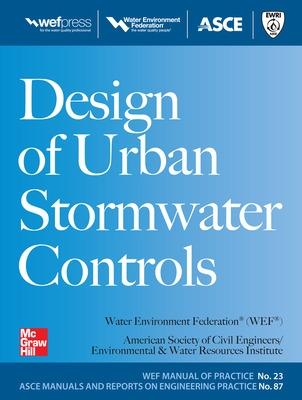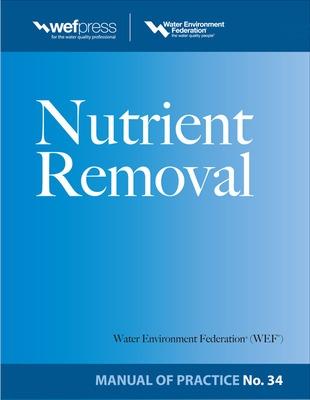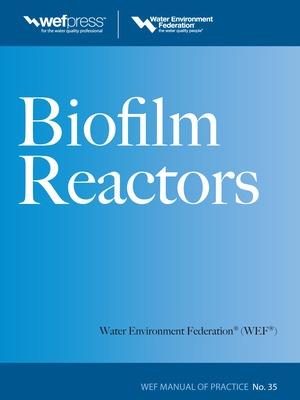Water Resources and Environmental Engineering
6 total works
Information Technology in Water and Wastewater Utilities, WEF MOP 33
by Water Environment Federation
Practical Guidelines for Managing Information Technology in Water and Wastewater Utilities
This Water Environment Federation resource presents an overview of the information technology (IT) systems, practices, and applications most relevant to utilities. Information Technology in Water and Wastewater Utilities covers strategic planning, IT program development, project management, infrastructure, security, organizational issues, success factors, and challenges. Six real-world case studies highlight specific technical details and illustrate the concepts presented in this authoritative guide.
Information Technology in Waste and Wastewater Utilities covers:
- Business drivers and IT systems and applications
- IT planning
- Developing an IT program for a municipal agency
- IT capital project management
- IT systems--processes and practices
- IT security
- Organizational aspects of IT
- Critical success factors and key future challenges for IT in water and wastewater utility projects
Wastewater Solids Incineration Systems MOP 30
by Water Environment Federation
The Latest Methods for Wastewater Solids Incineration
This authoritative volume offers expert guidance on incineration of wastewater solids, including sludge and biosolids. Current practices and environmentally sustainable options are covered. Developed by the Water Environment Federation, this definitive guide fully explains the safety, permitting, design, operation, and maintenance of the incineration process. Wastewater Solids Incineration Systems includes detailed coverage of instrument and control systems, heat recovery and reuse, emission control and monitoring, ash handling and recycling, and more. Case studies of new and updated facilities are presented.
Wastewater Solids Incineration Systems covers:
- Safety regulations, codes, and standards
- Permitting and emissions regulations
- Combustion theory
- Combustion technology, including fluid bed design and multiple-hearth furnaces
- Heat recovery and reuse
- Emissions control and monitoring
- Ash handling and recycling
- Instrumentation and control
- Incinerator operations and maintenance
Wastewater Collection Systems Management MOP 7, Sixth Edition
by Water Environment Federation
Publisher's Note: Products purchased from Third Party sellers are not guaranteed by the publisher for quality, authenticity, or access to any online entitlements included with the product.
The Latest Methods for Managing Wastewater Collection Systems
This Water Environment Federation resource provides up-to-date guidance on the oversight of wastewater collection systems, including gravity sewers, pumping stations, force mains, and other sewer-conveyance-related facilities. This authoritative volume offers strategies for developing a comprehensive asset-management program that encompasses capacity, management, operations, and maintenance (CMOM) principles as well as the business, engineering, human resource, and communications aspects of a wastewater collection systems project.
Wastewater Collection Systems Management, Sixth Edition covers:
- System operations and maintenance
- Information management
- Collection system assessment and capital improvement planning
- System design considerations
- Construction contracting
- Public policy and community relations
- Budgeting and financial planning
- Safety, standard procedures, training, and certifications
- Emergency preparedness and security
Innovative Techniques for Designing Urban Stormwater Controls
Fully updated to address the paradigm shift in the way stormwater is viewed and managed, Design of Urban Stormwater Controls focuses on consolidating technologies to foster a convergence between traditionalstormwater controls and green infrastructure. This authoritative resource explains how systems of stormwater controls can be designed to meet multidisciplinary objectives, including flood control; stream channelprotection; groundwater recharge; water quality improvement; protection of public safety, health, and welfare; and multipurpose public benefits.
Coverage includes:
- Urban stormwater management overview
- Effects of stormwater on receiving waters
- Performance goals for stormwater controls
- Unit processes and operations for stormwater control
- Selection criteria and design considerations
- Swales and strips
- Basins
- Filters and infiltrators
- Gross pollutant traps and mechanical operations
- Maintenance of stormwater controls
- Whole life cost of stormwater controls
- Performance assessment
- Analytical tools for simulation of stormwater controls
This Water Environment Federation resource provides comprehensive information on biological and chemical methods for nitrogen and phosphorus removal from wastewater. Nutrient Removal covers environmental and regulatory issues and provides an integrated approach for combined nitrogen and phosphorus removal, including details on ammonia and dewatering liquors treatment. Natural treatment systems are also discussed in this definitive guide.
Nutrient Removal covers:
Nutrients and their effects on the environmentRegulation of nutrients in the effluents of wastewater treatment plantsOverview of the nutrient removal processesPrinciples of biological nitrogen removalNitrificationNitrogen removal processes, configuration, and process-sizing criteria for combined nitrification and denitrification processesChemical and biological phosphorus removalSidestream nitrogen removalStructured process models for nutrient removalTroubleshooting for full-scale nutrient removal facilitiesAquatic natural treatment systems
The latest Methods for Wastewater Treatment Using Fixed-Film Processes
This Water Environment Federation resource provides complete coverage of pure fixed-film and hybrid treatment systems, along with details on their design, performance, and operational issues. Biofilm Reactors discusses factors that affect the design of the various processes, appropriate design criteria and procedures, modeling techniques, equipment requirements, and construction methods. Operational issues associated with each type of process are presented, including potential problems and corrective actions. Real-world case studies illustrate the application of the technologies presented in this authoritative volume.
Biofilm Reactors covers:
- Biology of fixed-film processes
- Trickling filter and combined trickling filter suspended-growth process design and operation
- Rotating biological contactors
- Moving-bed biofilm reactors
- Hybrid processes
- Biological filters
- New and emerging fixed-film technologies
- Clarification
- Effluent filtration
- Development and application of models for integrated fixed-film activated sludge, moving-bed reactors, biological aerated filters, and trickling filters

